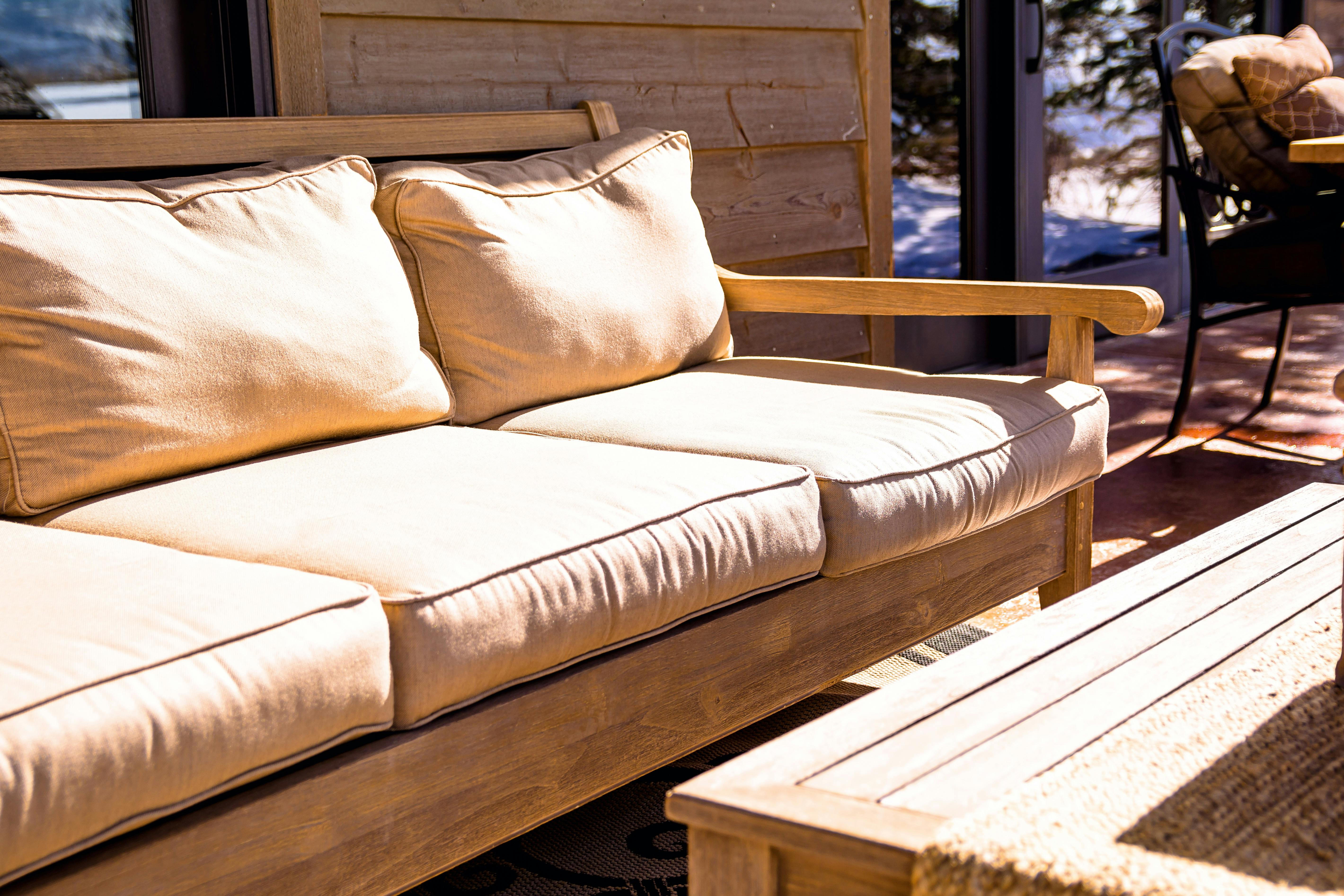
As summer gives way to autumn, our gardens naturally see less use. For most in the UK, the colder months bring persistent rain, damp air, and occasional frost all of which can be harsh on garden furniture. When cushions are left outside, they can quickly become faded, musty, or even mouldy. With the right preparation and storage, your garden cushions will stay fresh and ready to use when the warmer days return.
Read our blog: Winter-Proof Your Patio Set
Cleaning and Preparing Cushions
Preparing your cushions for winter storage should always start with ensuring your cushions are clean before going away. Over the summer they pick up dust, pollen, and the occasional spill, all of which can leave stains if not dealt with before storage.
- Begin by brushing off loose dirt or using a vacuum with a soft attachment. Any visible marks should be treated gently with a mild soapy solution or fabric cleaner, blotting rather than scrubbing. Always refer to your user manual for specific instructions.
- If your cushions have removable covers, wash them according to the care instructions. A gentle wash freshens the fabric and helps remove lingering odours. Always refer to your user manual for specific instructions.
Once clean, let both the covers and the cushion inners dry completely in a warm, ventilated space or outside. Moisture is the biggest enemy when it comes to storage, even the smallest trace can cause mould to develop over the winter months.
Read our blog: Garden furniture: Cleaning tips for different materials
Finding the Right Place to Store
Where you store cushions is just as important as how you prepare them for storage. The best environment is one that is cool, dry, and well-ventilated. Indoors is ideal, as it provides stable conditions with low humidity.
Aim to keep cushions somewhere where moisture levels stay below 60%, as higher humidity can lead to damp fabrics and unpleasant smells.
If possible, avoid spaces that are very cold, damp, or prone to temperature swings, such as uninsulated lofts or sheds.
Keep cushions raised off the ground on shelving or pallets to avoid contact with cold or damp floors. Another practical option is a weatherproof storage box, provided it has some ventilation to prevent condensation.
Read our blog: Eco friendly ways to protect and restore outdoor furniture
Storing Cushions Safely
Once you’ve found the right spot, consider how you store them. Cushions should be protected from dust but still allowed to breathe. Cotton storage bags, pillowcases, or even clean sheets work well, keeping the fabric fresh without trapping moisture. Avoid sealing cushions in plastic bags, as these restrict airflow and encourage condensation.
When stacking, don’t squash cushions tightly together or pile them too high. Storing them loosely helps to maintain their shape and ensures they’ll be comfortable when you bring them out again. If possible, check on them once or twice during the winter to make sure everything remains dry and fresh.
Ready for Next Summer
Putting in a little effort now will make all the difference when the sunshine returns. By cleaning your cushions, ensuring they are thoroughly dry, and storing them in a cool, dry, and well-ventilated place, you’ll avoid stains, smells, and damage.
Come spring, your garden cushions will be ready and waiting, looking as inviting as the day you put them away and ready for many more seasons of comfort in the garden.